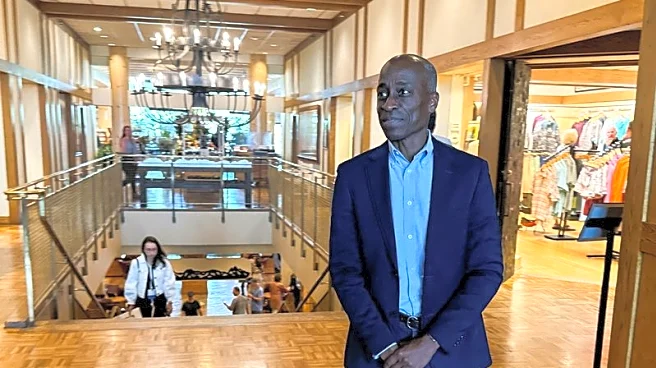What's Happening?
Federal Reserve Vice Chair Philip Jefferson emphasized the need for a cautious approach to further interest rate cuts. Speaking at a Kansas City Fed event, Jefferson noted that while the central bank's recent quarter-percentage-point rate cut was appropriate,
the current policy stance remains somewhat restrictive. He highlighted the importance of moving towards a neutral rate that neither restricts nor stimulates the economy. The decision to proceed slowly is influenced by differing opinions among Fed officials regarding inflation risks and the potential erosion of the job market. The lack of government data, due to a recent 43-day government shutdown, complicates the analysis ahead of the upcoming Fed policy meeting scheduled for December 9-10.
Why It's Important?
The Federal Reserve's approach to interest rate adjustments is crucial for the U.S. economy, impacting inflation, employment, and overall economic growth. A cautious approach to rate cuts could help stabilize inflation without stifling economic activity. The division among Fed officials reflects broader economic uncertainties, including the potential for job market deterioration. The outcome of these deliberations will affect businesses, consumers, and financial markets, influencing borrowing costs and investment decisions. The Fed's strategy will be closely watched by economic stakeholders seeking to understand the future trajectory of U.S. monetary policy.
What's Next?
The Federal Reserve's upcoming policy meeting in December will be pivotal in determining the direction of interest rates. Stakeholders, including businesses and investors, will be keenly observing the Fed's decisions and any new data releases that could influence policy. The Bureau of Labor Statistics' forthcoming employment report will provide critical insights into the job market, potentially swaying the Fed's approach. As the Fed navigates these complex dynamics, its decisions will have significant implications for economic stability and growth.














